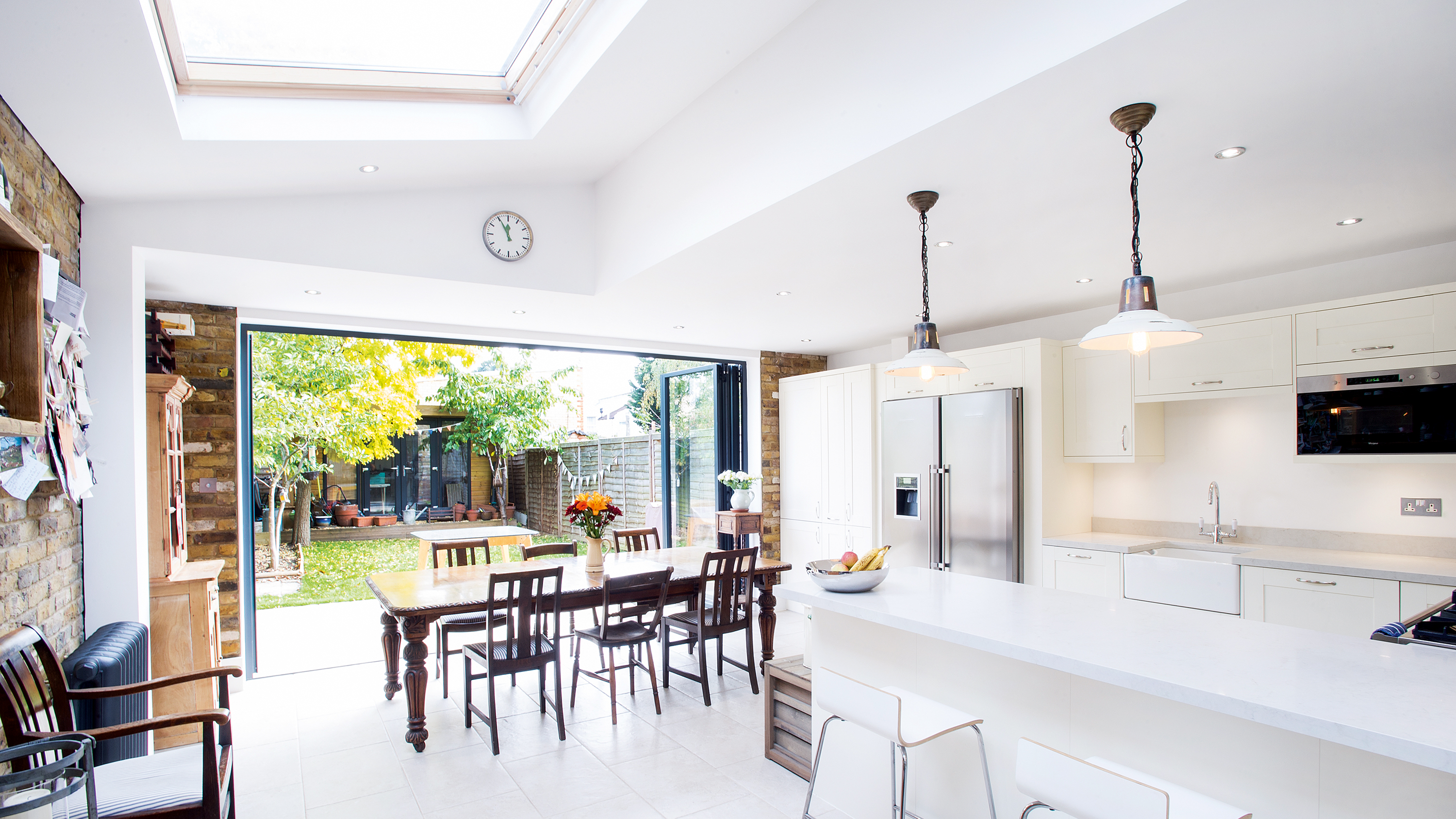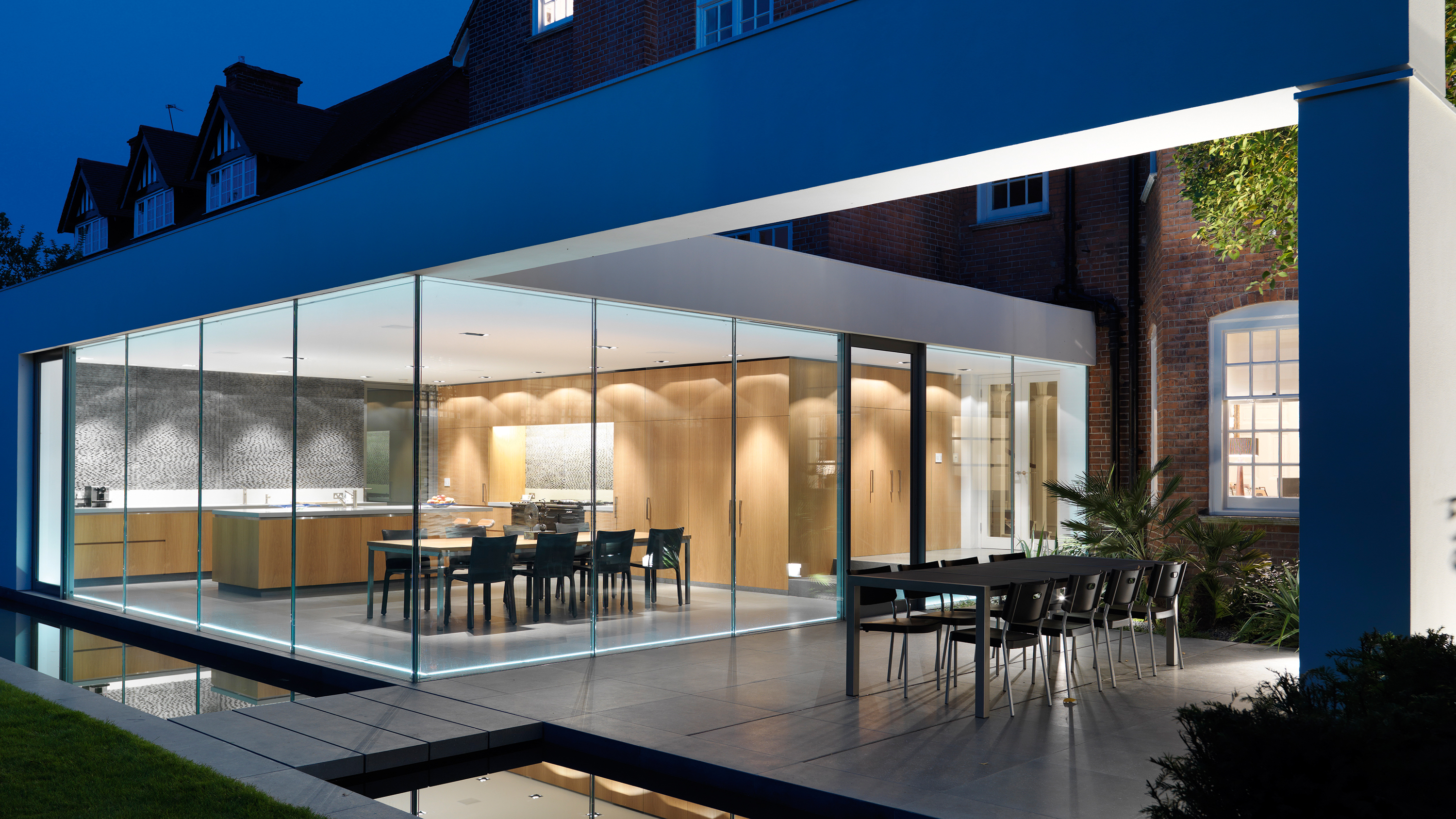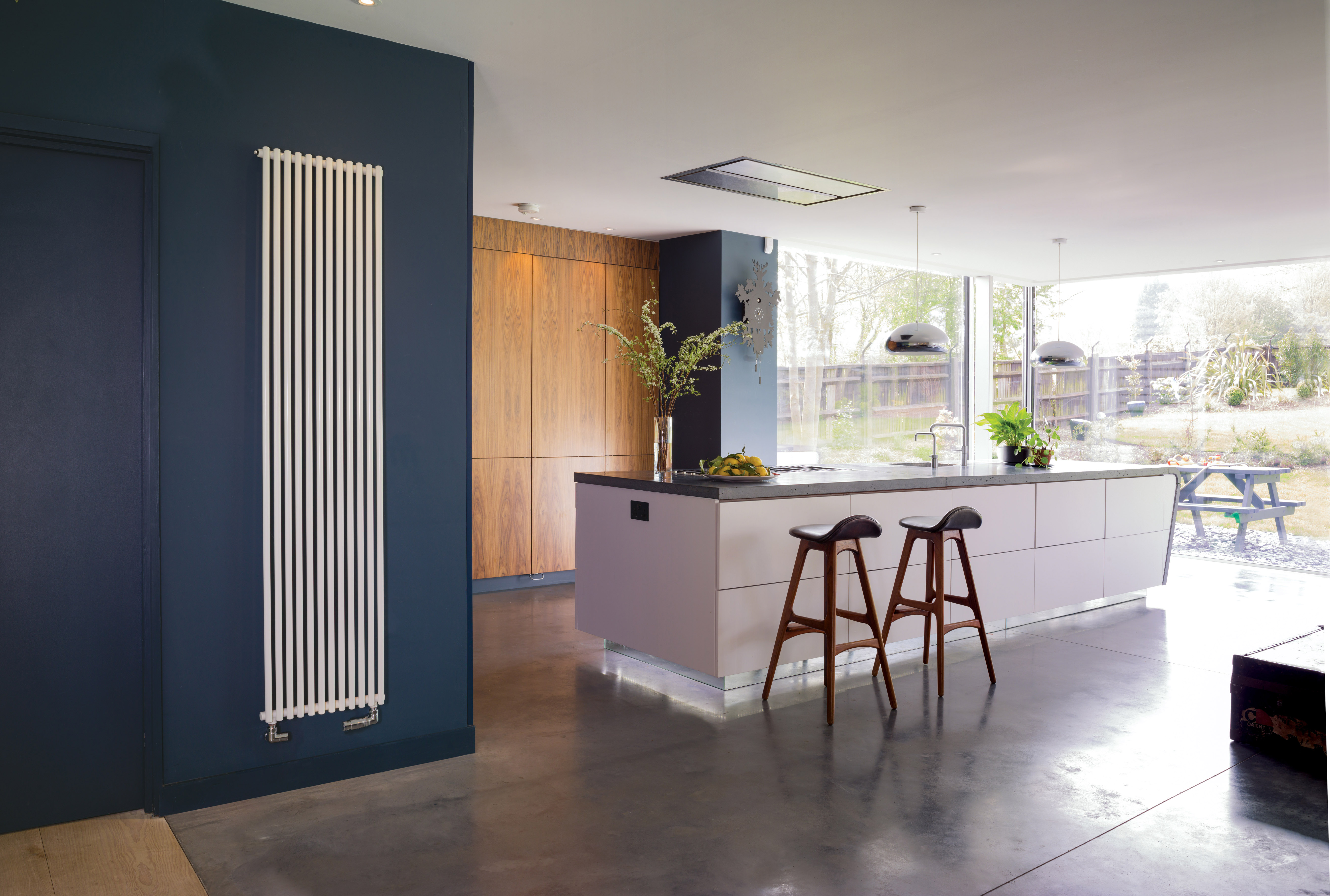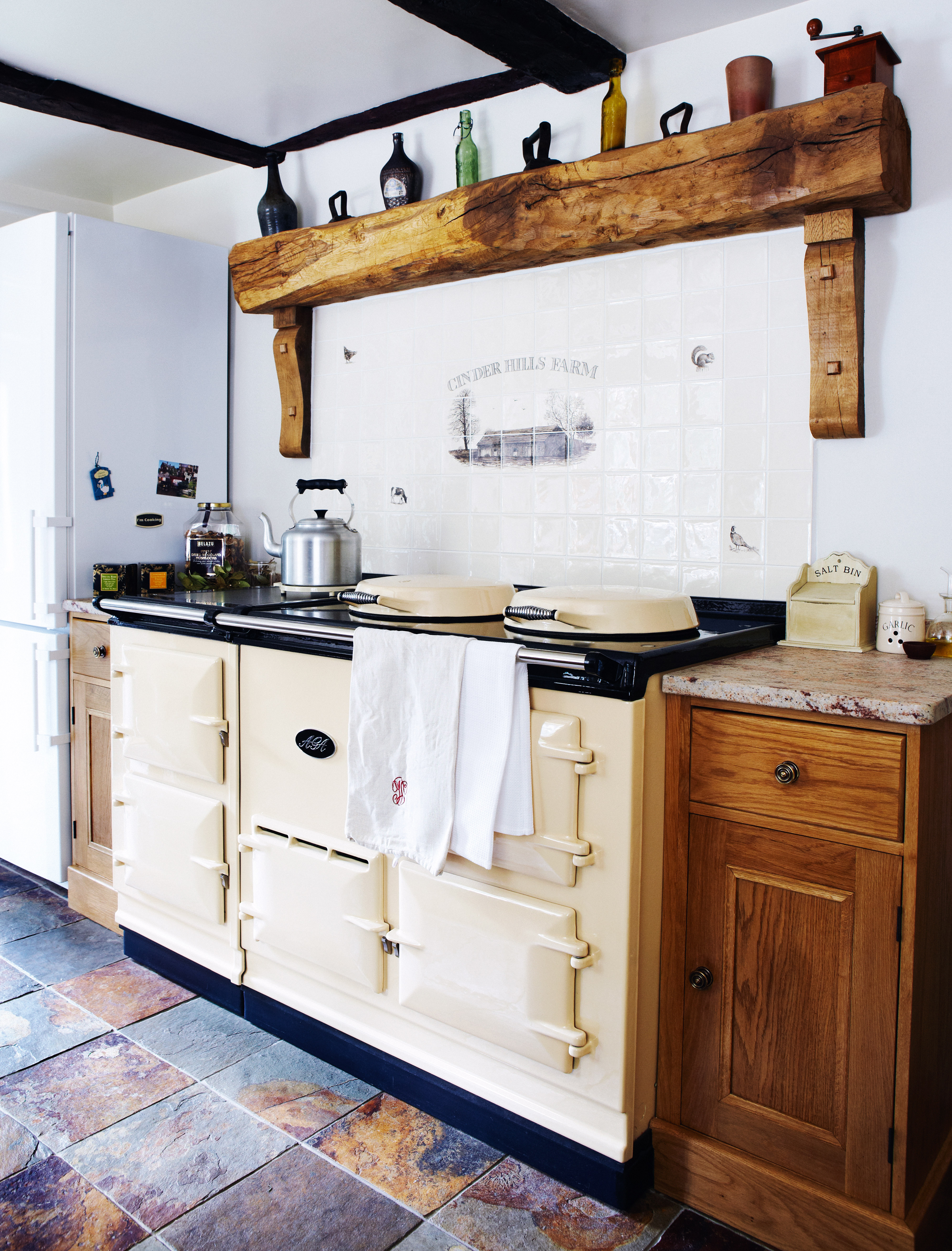Kitchen heating: the best ways to warm your kitchen space efficiently
It's vital to get your kitchen heating right from the start. From underfloor heating, to radiators, plinth heaters, range cookers and radiators – our guide to heating a kitchen covers all the solutions


Getting your kitchen heating right isn't always an easy feat. Whether you're designing a kitchen from scratch or building a kitchen extension, planning the heating system in your new room is vital if it is to feel cosy and inviting in colder months, and comfortable in warmer months.
The system you choose – from wet underfloor heating to range cookers – will largely depend on your budget, the age of your home, the look of your kitchen, your choice of kitchen flooring, plus of course, the level of upheaval you're happy to put up with. Follow our guide to get your kitchen heating just right.
When you're ready for more kitchen ideas and inspiration head over to our gallery
What to consider when heating a kitchen
Remember that it's not just the oven that gives off heat in your kitchen; appliances such as fridges do too, which makes calculating the heating needed tricky. Talk to a qualified heating engineer to get the correct radiator sizes, capacities and positions to get heating levels right, or take a look at Bisque's free online heat loss calculation tool.
Taking measures like fitting timers and thermostats for underfloor heating or thermostatic valves to radiators will help you control the room's the temperature more accurately.
Bear in mind, too, that if you are adding a kitchen extension, you may need to upgrade your boiler if it is to cope with the demands new heating systems make on it.
- Designing a kitchen from scratch? Check out our advice piece. For advice on tackling your kitchen on a budget, we've got help for that too.
Installing underfloor heating in a kitchen

Invisible heating sources, such as underfloor heating free up valuable wall space for fittings and furniture
Is underfloor heating worth it in kitchen?
Get small space home decor ideas, celeb inspiration, DIY tips and more, straight to your inbox!
Underfloor heating (UFH) is particularly effective for large open-plan kitchen diners – especially those with high ceilings – as the entire floor radiates heat upwards, meaning you'll enjoy warm feet and even room temperatures. This type of radiant heating also means reduced draughts, moisture levels and airborne allergens.
For small kitchen designs, underfloor heating has the added bonus of doing away with the need for radiators, giving you more wall space for cabinetry. When planning the underfloor heating system for your kitchen, take into account the position of cabinetry, as you will not need to lay it beneath them.
Which underfloor heating system?
There are two main underfloor heating systems: water, which runs through pipes as part of your regular heating system, or electric. Here are their prospective pros and cons:
Buried warm water systems are just that: pipes are buried into the floor screed, which is then finished with your choice of kitchen flooring.
Pros: Most energy-efficient way of delivering UFH; low running costs; the system can be zoned and is controlled by a manifold, usually located in a cupboard; the whole floor slab becomes the heat emitter and ensures long-burn heat production.
Cons: Requires a complete overhaul of the existing floor structure and so best suited to extensions and major renovations; as with surface-mounted warm water system, wet UFH relies on your central heating system to heat your home – you may need to upgrade your boiler to cope with this added demand.
Surface-mounted warm water systems are a good option for renovators who don’t want to dig up the kitchen floor. Instead, insulated panels, with channels routed out for 1.2cm pipes to sit in, can be laid on top of the existing kitchen floor, adding as little as 1.5cm to the floor height, and using warm water in the same way as the buried systems. Look to companies such as Nu Heat and Polypipe for these systems.
Pros: Easy-to-fit low-profile system.
Cons: Relatively expensive; can cause level changes between rooms.
Electric underfloor heating systems are the ideal choice if you don’t want to raise the floor levels in your kitchen. Electric systems operate with matting on to which cables connect into the home’s electrical circuit and is controlled by timers and thermostats.
Pros: Easy to retrofit; ideal for individual rooms; cheap to install; much of the work can be done by a DIYer; slim and can be laid within tile adhesive; works separately to your central heating system.
Cons: Relatively high running costs compared to water systems, although cheaper to install and programmable timers can help cut costs.
Which flooring is it compatible with?
Choosing kitchen flooring? Underfloor heating will work with most kitchen floor materials, including ceramic and porcelain tiles, engineered wood, laminate, vinyl, concrete and resin, although heating and cooling times will vary.
Find out more about underfloor heating in our comprehensive guide.
What does underfloor heating in a kitchen cost?
Expect to spend upwards of £100 per square metre for water systems and from £50 per square metre for electric, excluding preparation, underlay and installation. Warm water-based systems have lower running costs than electric underfloor heating systems, but electric systems are far less expensive to install for small areas (up to 20 square metres).
Underfloor Heating Manufacturers’ Association is a useful resource for advice and quotes.
Warming your kitchen with heated glass

If you are planning a glass extension, you might like to consider heated glass for your glazing. This type of glazing has a transparent metal oxide coating; electricity is passed through the coating to generate a radiant heat source.
Depending on the power input into the glass, this radiant heat can either be used to heat your kitchen extension using the infra-red radiation, to create a warm surface to the glass to stop condensation forming on the glass (or create a warm surface on the outside of a glass structure to stop snow or ice build-up).
You will need to use at least 20 per cent of the floor area of the kitchen diner in heated glass, but should talk to a specialist to ensure you get the glass/kitchen area proportions just right.
Pros: The smooth radiant heat of heated glass creates a uniquely comfortable temperature, reducing cold draughts near large glazed elevations. Heated glass removes the need for radiators, underfloor heating and other heat sources.
Cons: Heated glass is expensive.
IQ Glass can create heated glass units in single, double or triple-glazing, based on your specifications and application; they can be installed into frameless structural installations or into framework.
How much does heated glass cost?
The starting costs of heated glass units are approximately £1,000 per square metre. However, the costs of fitting such technology would be offset by the energy savings in the long run.
Heating your kitchen with radiators

Trubi radiator in White RAL 9010 by Bisque
If you are simply renovating an existing kitchen, perhaps want to preserve original kitchen floors, or are looking for a more affordable option for installing heating in your kitchen, think radiators.
Pros: There's a huge choice of designs in different materials, colours, shapes, sizes and styles – from contemporary to traditional – so you can be sure to find radiators to complement your kitchen's overall style and the radiators around the rest of your home. You don't have to overhaul your entire heating system to update your existing kitchen's heating – a new radiator design can be simply installed by a plumber.
Cons: Radiators take up valuable wall space, which might make or break the layout of a small kitchen; and an open-plan kitchen diner heated only by radiators can suffer from cold spots.
Which radiators to choose?
Classic, cast-iron column radiators are ideal for Georgian and Victorian style kitchens, industrial style kitchens, farmhouse kitchens, classic country kitchens and even Shaker-style kitchens. Sleek glass panel heaters, chrome towel rails and ultra-modern designs in a vast range of colours and even wood-effect finishes will suit contemporary kitchens of every style, although bear in mind that chrome radiators give out 20 per cent less heat than other finishes.
In a small kitchen, go for slim models, and opt for horizontal rather than vertical columns, which will offer more convenient hanging space for tea towels or washing; look out, too, for models with tea towel rails or magnetic hooks, which can be attached to flat-fronted panel radiators.
Which fuel type for radiators?
Usually, radiators are run off a gas central heating system, but if you do not have a gas supply, oil-, electric-only or dual-fuel radiators are an option. Some of these designs give you increased flexibility in positioning your radiators, too, with plinth heaters (which fit beneath kitchen base units) allowing you to free up wall space in small kitchens, for example.
How much do new radiators cost?
You can pay as little as £50 for an attractive kitchen radiator.
Using range cookers as a heat source

Traditional range cookers, such as Agas, can be used as a heating source for the entire house and add bags of charm and character
Choosing a range cooker? Particularly if yours is a traditional home, you might like to consider a range that provides central heating (radiators) and hot water as well. These cast-iron, heat-storage models cooks using radiant heat – think traditional Agas and Rayburns.
If you go for this option, don't just consider the range's looks – you'll need to put fuel type at the top of your list of considerations. They can be powered by electricity, gas, LPG, oil or solid fuels.
Bear in mind that the number of radiators your range cooker can run will be dependent on the boiler output of that particular model, ask your heating engineer to advise on your selection.
Pros: Range cookers can offer a flexible way to heat your home, with multi-channel programmers allowing you to run cooking, heating and hot water functions both independently and via a timer.
Cons: These range cookers are designed to cook food using radiant heat, heating up cast iron and cooking food within at high temperatures, which can take some getting used to. They are designed be on all the time as a heating source for the home, as well as a cooking appliance; ensure you choose a good quality model with good levels of independent control over the heating, hot water and cooking.
How much do heat-storage range cookers cost?
Cast-iron ranges are made to last and the price often reflects that: the Aga Total Control (with an on/off switch) and the Aga iTotal Control model (that can be switched on and off remotely), for example, cost from around £10,395.
Fitting a stove in your kitchen

Wood-burning stoves create a focal point, especially in an open plan kitchen diner, and are a useful source of extra heating
If yours is an open plan kitchen diner, a wood burning or multi-fuel stove is not only a good source of additional heat (to underfloor heating or radiators, for example), but also a cosy centrepiece for the living or dining area of the room. Ranging from freestanding appliances positioned in the corner of a room to those designed to sit within traditional fire surrounds, stoves are a flexible choice, too. They are mainly available in cast iron or steel, and can be enamelled with a coloured finish.
Fuel options include wood; coal; oil; gas: LPG; electricity; and pellets. If you choose a multi-fuel stove, it can be used with wood or coal; you will need a grate when burning coal/smokeless fuel. This grate is removed when using logs, as they burn better on a ‘hotbed’ of ash. Generally, solid-fuel stoves tend to produce large amounts of heat, but are less controllable than gas, oil and pellet models. If you live in a smoke control area, you’ll need a Defra-approved stove.
Pros: More efficient than an open fire, where the majority of the heat disappears up the chimney, stoves are sealed and designed to burn fuel as efficiently as possible.
Cons: Stoves need cleaning and maintaining properly to perform well. Calculating the size of stove you need is complicated (add up the room's volume in cubic metres then assign 1kW heat output for every 14 cubic metres to give a consistent room temperature of 21°C when the temperature outside is zero). Consult a HETAS-registered installer or retailer for an accurate assessment.
What do stoves cost?
DIY store woodburning stoves can cost as little as £300; expect to pay from £500 upwards for more sophisticated models, excluding flues.
More kitchen planning know how:

Lucy is Global Editor-in-Chief of Homes & Gardens having worked on numerous interiors and property titles. She was founding Editor of Channel 4’s 4Homes magazine, was Associate Editor at Ideal Home, before becoming Editor-in-Chief of Realhomes.com in 2018 then moving to Homes & Gardens in 2021. She has also written for Huffington Post, AOL, UKTV, MSN, House Beautiful, Good Homes, and many women’s titles. Find her writing about everything from buying and selling property, self build, DIY, design and consumer issues to gardening.